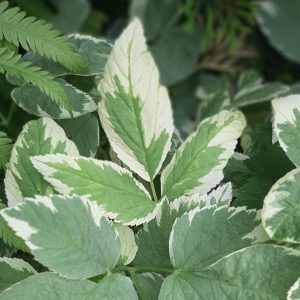 As gardening season begins, people in Canada are encouraged to be mindful when selecting plants and seeds, avoiding invasive options at garden centres and online. Invasive plants can overtake gardens, crowding out other plants and spreading uncontrollably to surrounding areas.
As gardening season begins, people in Canada are encouraged to be mindful when selecting plants and seeds, avoiding invasive options at garden centres and online. Invasive plants can overtake gardens, crowding out other plants and spreading uncontrollably to surrounding areas.
“‘Wildflower’ seed mixes often contain invasive species like bachelor’s button, periwinkle, and baby’s breath,” says Colin Cassin, Executive Director at the Invasive Species Centre. “Once planted, invasives like these can quickly spread outside your yard to natural areas, where they can disrupt local ecosystems, choke out native species, and cause cascading negative environmental, economic, and social impacts.”
Buying and selling invasive plants is a high-risk pathway for their spread. Gardeners have the power to make positive ecological decisions for their own gardens, and for the ecosystems beyond.
“People may not be aware that what they are purchasing are invasive seeds or plants,” says Monica Liedtke, Terrestrial Invasive Plants Coordinator at the Invasive Species Centre. “That’s where awareness and education come in. We encourage everyone buying seeds and plants to do their research with reputable sources.”
The Invasive Species Centre recommends five wise practices for property owners and gardeners to reduce the spread of invasive species and protect native plants.
- Learn which plants are invasive in your area and avoid adding them to your garden.
Certain plants pose challenges in different regions of Canada due to climate, terrain, and other environmental conditions. Look for information specific to your area. There are many online and print resources available that can help identify which invasive plants to avoid in your region. - When purchasing seed packets, look carefully for invasive species.
To avoid unknowingly purchasing seed packets that contain invasive species, pay attention to common and scientific names, as well as alternative names. - Choose plants that are native to your area.
Native plants are a beautiful addition to your garden that have adapted to grow well in their habitat and support pollinators and local wildlife. Resources, such as Grow Me Instead Guides, provide information about invasive plants and offer native plant alternatives. - Inspect your property for invasive plants.
Regular monitoring will allow you to spot invasive plants and prevent them from gaining a foothold and spreading in your garden, yard, and beyond. Refer to plant management guidelines for information about how to control invasive plants on your property. Report suspected sightings to EDDMapS or
If you have Invasive Plants in your Garden – Dispose Properly to prevent spreading
Proper disposal of invasive plants is essential to prevent them from spreading. Never discard garden waste in nearby natural areas. Avoid composting invasive plant material and seeds as they can sometimes survive this process. If you have a seed packet with invasive species that you’re looking to dispose, put the seeds and packaging in a sealed plastic bag, and place them in your regular garbage that goes to a landfill. For invasive plant materials, dispose in construction grade plastic garbage bags, set out on a hard surface for one to two weeks in the sun, and place in household waste. Refer to best management practices and federal, provincial, or municipal legislation for specific information on disposal.
By knowing which invasive plants to avoid, planting native species, monitoring and eliminating invasives, and properly disposing of plant material, gardeners and property owners play a crucial role in preserving ecosystems and biodiversity in Canada. For more information on invasive species, please visit www.invasivespeciescentre.ca
SOURCE: Invasive Species Centre
- Mixed Curling Standings – December 13 - December 13, 2025
- Ladies Curling Standings – December 12th - December 12, 2025
- Municipality of Wawa Partners with SECFDC to Administer Municipal Accommodation Funds - December 10, 2025
 Wawa-news.com You can't hear the 'big picture'!
Wawa-news.com You can't hear the 'big picture'!